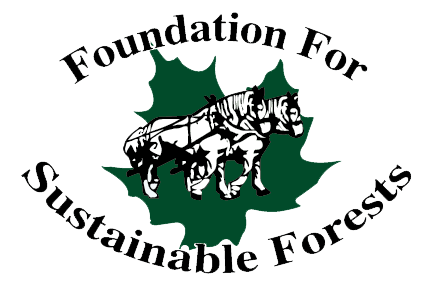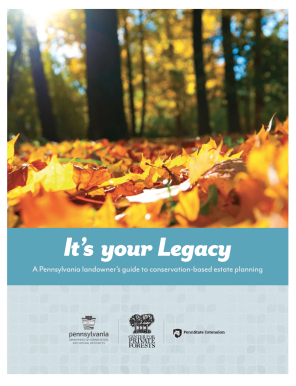Your Land, Your Legacy
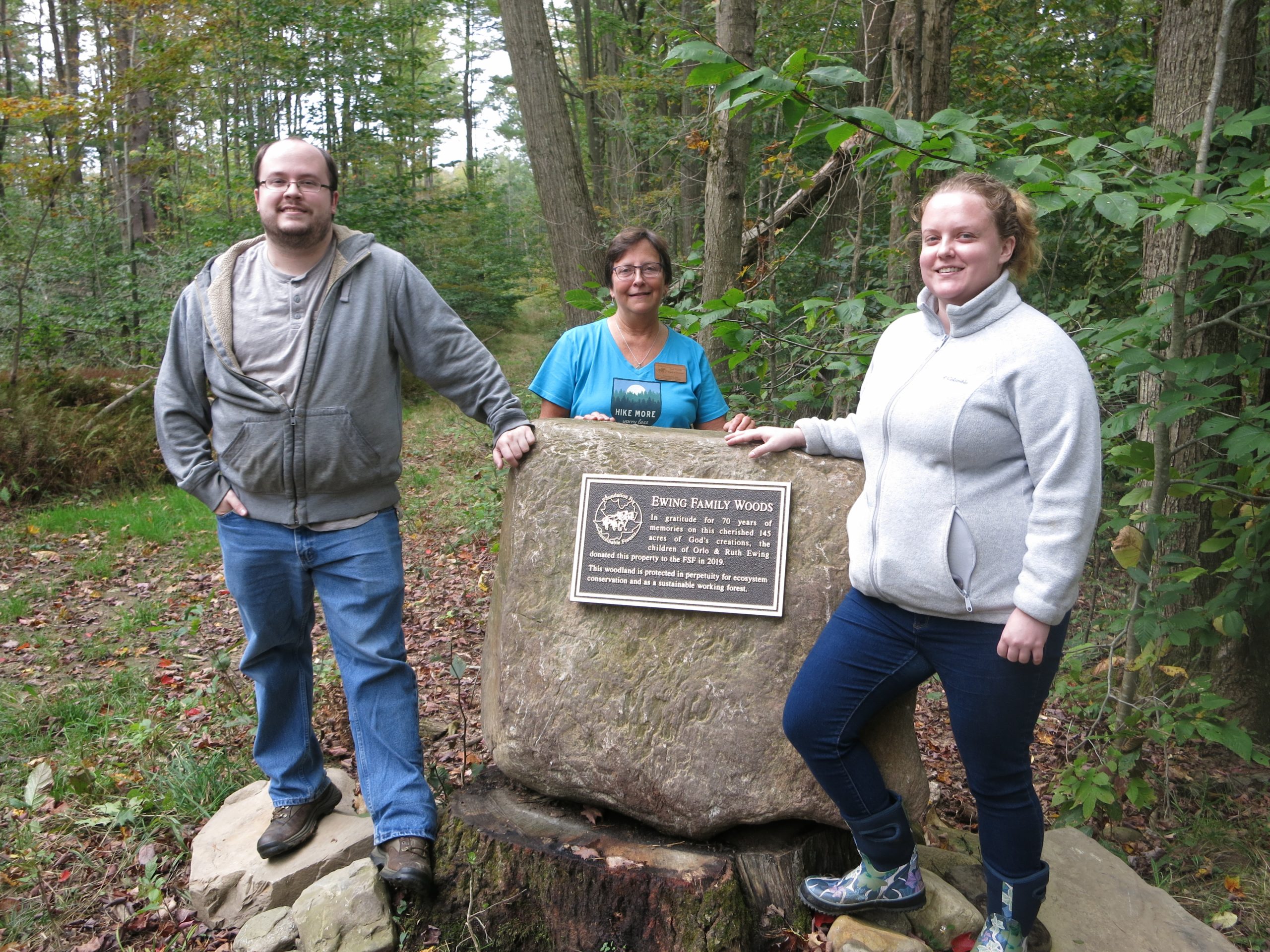
The Ewing Family celebrates the long-term protection of their woods near Corry, PA
As an owner of forested land you are a steward of one of Pennsylvania's greatest natural heritages. No matter your acreage, you are in a position to shape the landscape of your region for generations to come.
If you are passionate about protecting your land and that natural heritage, now is the time to make a plan. Estate taxes are one reason; federal taxes can be as high as 55 percent of a property's fair market value, often forcing heirs to sell. In addition, future owners might not share your values or concern for the land, resulting in development, subdivision, harmful logging practices or conversion to non-forest uses.
The Foundation for Sustainable Forests can work with you to find ways to protect your land and meet what other needs you might have. Understanding your conservation options is an important first step.
Take Steps to Guide the Future of your Land
Until you have a plan, your legacy is only a good intention. Penn State Extension and the Center for Private Forests offer helpful resources that can help you to translate your intentions into action, and navigate the necessary pathways, from communicating your vision to your heirs, to securing the legal framework for your legacy plans.
This is a lengthy and detailed process, but an important one. The sooner you familiarize yourself with your options and begin to take steps towards securing your legacy, the more likely you are to succeed. The Foundation for Sustainable Forests is happy to help you directly, or point you towards organizations that may be a better fit for your conservation goals.
Conservation Options for Landowners
These are some general descriptions of land conservation programs. To learn more about programs specific to the Foundation for Sustainable Forests, such as our Shared Gift Program, visit our Forest Conservation Planning page.
Land Donation: Donating land for conservation purposes may be the best option for you if you do not wish to donate land to heirs; own property you no longer use; own highly appreciated property; have substantial real-estate holdings and wish to reduce tax burdens; or would like to be relieved of the responsibility of managing and caring for the land.
Donations can be made during your lifetime or as a bequest. Land donations have the potential to provide significant tax advantages. Of course, you should always consult with a tax and/or estate attorney.
Donation with Life Tenancy: It is possible to donate your land now, while continuing to live on and/or enjoy the property for the duration of your life. Such a donation would relieve you of the taxes and other burdens of ownership and could possibly provide tax benefits.
Bargain Sale: If you need to realize some immediate income from your land, but would like to see it forever protected, a bargain sale might be the answer. In a bargain sale, you sell the land for less than fair market value. This makes it more affordable for the land trust, but also provides the seller several benefits, including reduced capital gains taxes and a potential charitable tax deduction based on the difference between the land’s fair market value and the sale price.
Conservation Easements: A conservation easement is a widely used land protection tool that limits development and spells out permitted uses of the land in perpetuity, but you retain ownership of the property. Landowners can sell or donate conservation easements, which will carry forward with the deed to future owners..
Land Management for a Healthy Future
Good forestry must involve a long-term view. Trees often have a lifespan of several hundred years so growing a healthy forest and maintaining a healthy forested ecosystem cannot be accomplished with short-term economic priorities.
The decisions you make now will have impacts far into the future.
Guiding Principles
Be reactive rather than proactive. Let conditions recommend the management rather than dictating conditions through management.
Maximize options. To accommodate future variables, management should create diversity and opportunity.
Emphasize art, not just science. Our scientific understanding is limited to a single generation of trees. Therefore, personal experience and intuition must play a role.
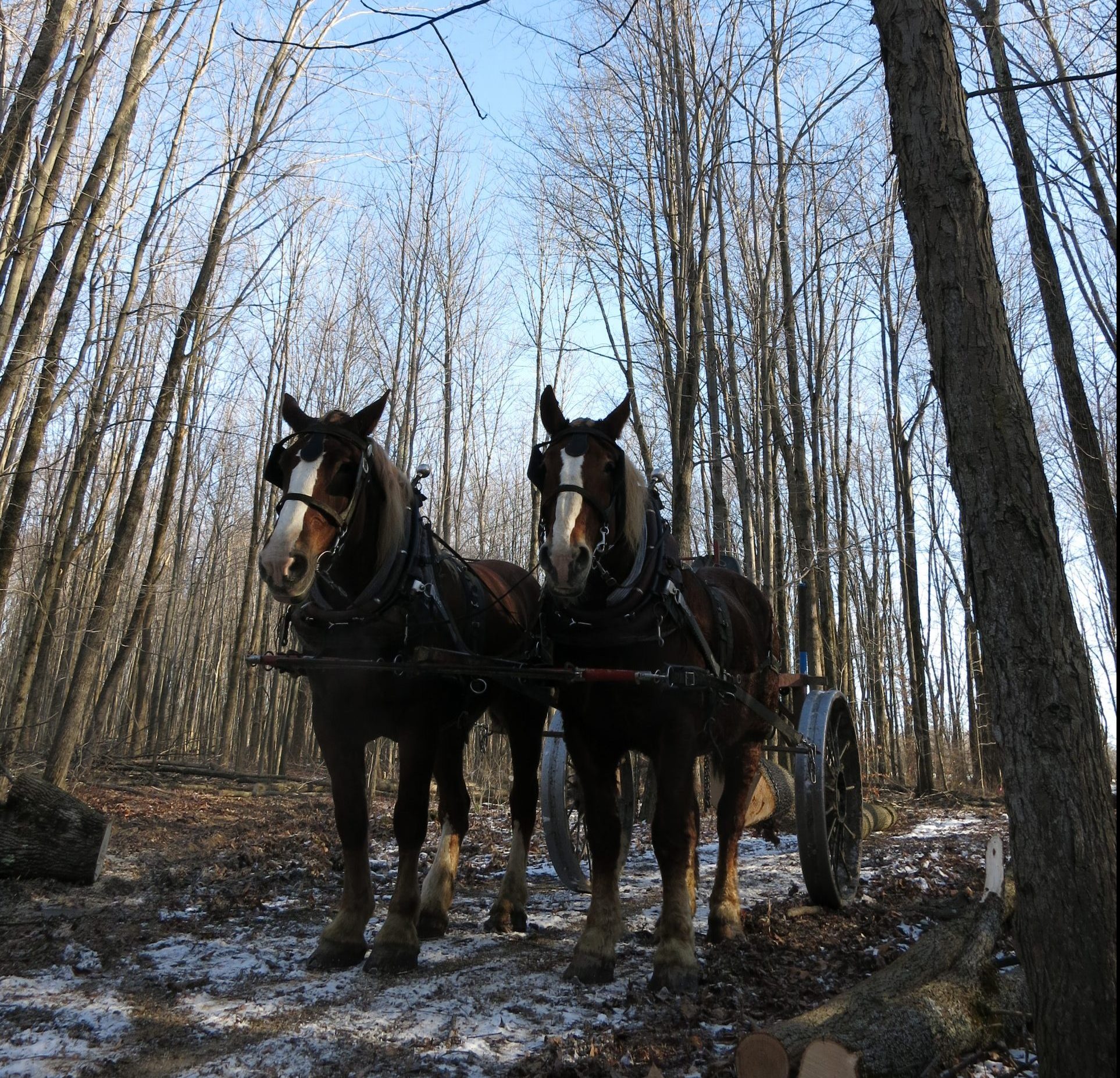
When deciding which trees to cut, focus on the health and potential of the forest as a whole, rather than the value of the tree. Using "worst-first" tree selection means that we harvest only the unhealthy, undesirable or worst trees. This leaves behind a forest stand of healthy, high quality trees that will yield the best long-term economic return and improve the overall health of the ecosystem. By avoiding large scale clearcuts and other intensive, industrial practices, our forests become a mosaic of trees with different heights, species, and functions. In many cases, early management is a matter of restorative forestry. Diverse forests are better able to provide habitat and to respond to future impacts.
We prioritize trees that remain in the forest over the ones being removed. No damage should be done to the remaining trees during a harvest and all impacts on the forest should be as minimal as possible. To achieve this, the Foundation typically uses teams of horses to skid logs rather than large machines. Since horses are lighter and smaller than conventional machinery we are able to navigate the forest without scraping against trees and compacting the soil.
Additional Resources
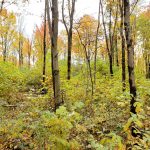
Land stewardship is no small task. Thankfully, there are public resources and sources of funding to support you in your efforts. From the start, it is important that you know your options, as well as your management goals for your land. You will want to keep those goals in mind at each step in the process to make sure that you are staying on the right track.
The resources below include technical assistance and funding for certain practices, such as invasive species management.
Pennsylvania's Department of Conservation & Natural Resources (DCNR) Bureau of Forestry has a Service Forester designated in each County. Service Foresters can visit your property at no cost to you, and provide technical assistance and direct you to resources for sustainable forest management on your woodland.
Visit the PA DCNR Service Forester Program website to learn more about their services and find your Service Forester
The US Department of Agriculture Natural Resource Conservation Service (USDA NRCS) has funds available for forest stewardship through the Environmental Quality Incentives Program (EQIP) and Conservation Stewardship Program (CSP).
These programs provide financial and technical assistance to "address natural resource concerns and deliver environmental benefits such as improved water and air quality, conserved ground and surface water, increased soil health and reduced soil erosion and sedimentation, improved or created wildlife habitat, and mitigation against increasing weather volatility."
Forest landowners are commonly concerned about the spread of invasive plants. These programs can provide financial system for addressing this issue.
The Family Forest Carbon Program is an opportunity for landowners to receive funding and technical assistance to improve forest health. The goal of the program is to engage family forest landowners in sustainable forest management by unlocking funding available through the carbon market. The program is being led by the American Forest Foundation and The Nature Conservancy and is currently active in Pennsylvania.
